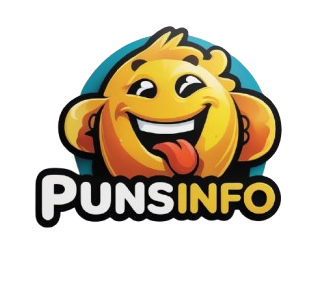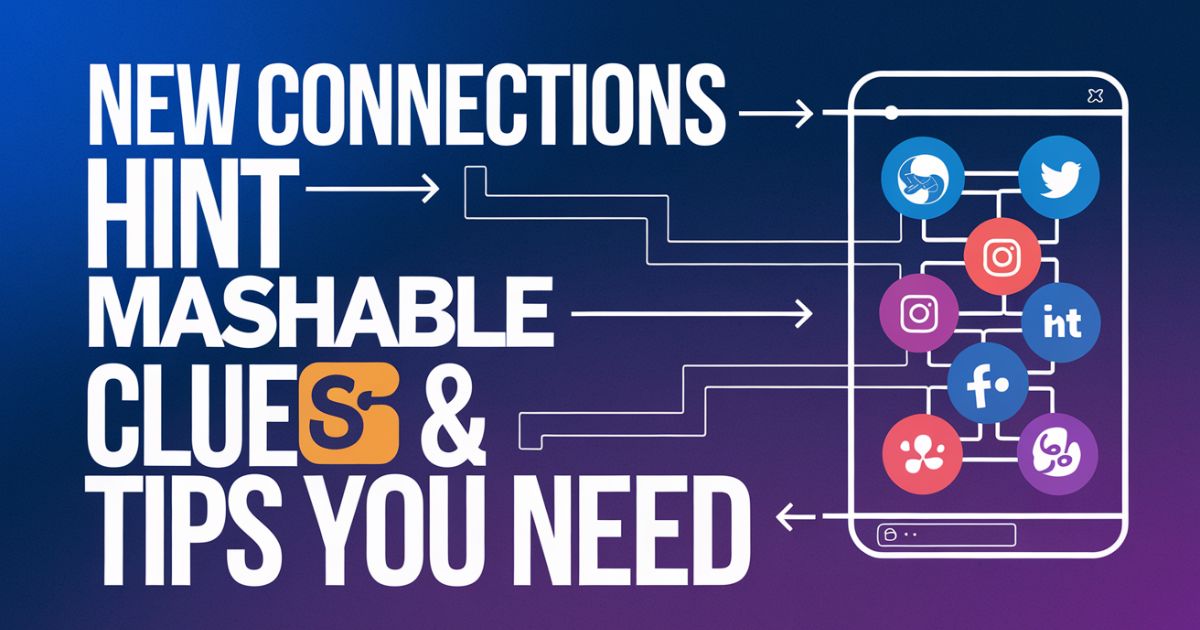Looking for the best hints to solve the NYT Connections puzzle? Wondering if Mashable’s hints are the best out there—or if there are better options? Whether you’re a daily solver or a curious newbie, this in-depth guide will walk you through everything about NYT Connections, how it works, how to use hints smartly (including Mashable’s), and give you expert strategies to improve your game.
What is the NYT Connections Puzzle?
Overview of the Game
The NYT Connections puzzle is one of the latest hits from The New York Times Games lineup. Released officially in 2023, it’s a word association game that challenges players to group 16 words into four sets of four, based on a common theme or connection. Sounds simple, right? Not quite.
Each group shares a hidden link—like synonyms, categories, or pop culture references—but many words can seem to fit into multiple groups. That’s where it gets tricky—and addicting.
Origins and Popularity
Connections was developed by Wyna Liu, an editor at NYT Games. Initially released in beta, it quickly exploded in popularity due to its simplicity, mental challenge, and visual design. Its growing fanbase shares solutions, theories, and strategies on social media, much like Wordle or Crossword.
In 2024, it became a daily ritual for thousands of players globally—much like Wordle did a few years earlier.
How It’s Different from Wordle or Crossword?
While Wordle challenges you to guess a five-letter word and Crosswords are clue-based, Connections is all about relationships. You’re not solving clues; you’re solving patterns and themes.
Key differences:
- No hints given in-game, making it more challenging.
- Color-coded categories based on difficulty.
- Requires lateral thinking, not just vocabulary.
It’s not about definitions—it’s about how your brain sees connections.
How the NYT Connections Puzzle Works? (Beginner to Advanced)
Puzzle Mechanics Explained Simply
Each day’s puzzle presents:
- 16 words
- Your task: Group them into 4 groups of 4
Each correct group shares a unique category:
- For example: Cake, Ice Cream, Donut, Brownie → Desserts
You get four chances to make incorrect guesses before you lose. The catch? Some words look like they belong in more than one category, which adds a twist to your brainwork.
Understanding the 4 Color-Coded Categories
Here’s what the colors mean, from easiest to hardest:
- Yellow: Easy — straightforward group (e.g., colors, shapes)
- Green: Medium — maybe common phrases or animals
- Blue: Hard — requires more abstract thinking
- Purple: Tricky — often puns, pop culture, or less obvious links
So, if you crack purple without help—consider yourself a true Connections master!
Common Trap Words & Confusing Patterns
Some words are “red herrings”—they look like they belong in multiple groups. For example:
- Mercury could be a planet or a metal
- Apple could be fruit or a tech brand
These tricky words are designed to confuse, so careful reading and testing combinations matter.
Sample Puzzle Breakdown (Visual Example)
Let’s say you see these 16 words:
- Mercury, Venus, Mars, Earth
- Gold, Silver, Copper, Iron
- Nike, Adidas, Puma, Reebok
- Ford, Tesla, Honda, Toyota
Groupings:
- Planets: Mercury, Venus, Mars, Earth (Yellow)
- Metals: Gold, Silver, Copper, Iron (Green)
- Shoe Brands: Nike, Adidas, Puma, Reebok (Blue)
- Car Brands: Ford, Tesla, Honda, Toyota (Purple)
See how clean and satisfying that solution is? That’s the goal.
NYT Connections Hint System (How Players Get Help)
Built-in Hints vs. External Help
The NYT Connections puzzle doesn’t offer in-game hints. There are no prompts or clues. Unlike crossword clues, you’re left to interpret the puzzle with zero assistance. That’s why many players turn to external sources like Mashable, Reddit, or YouTube for daily help.
Why Users Search for Daily Hints
People look for hints to:
- Get unstuck on one tough group
- Confirm if a word fits before using up guesses
- Learn patterns for long-term improvement
And some just want partial spoilers, not full answers. That’s where hint sites like Mashable come in.
Mashable NYT Connections Hints: What They Offer
Types of Hints Mashable Provides
Mashable is one of the top sites people use for daily puzzle hints. They typically provide:
- Category previews without listing the exact words
- Group clues based on theme (e.g., “One group is about board games”)
- Partial help, giving you the tools to solve without ruining it
It’s perfect for those who want nudges, not solutions.
Their Format & Approach
Mashable uses a clear, structured format:
- Spoiler-free hints first
- Then progressively more detailed clues
- Then finally, the full answer (hidden below spoiler warnings)
This layered approach makes it helpful for both casual solvers and those needing full walkthroughs.
Pros and Cons of Mashable’s Hints
Pros:
- Easy to find (Google: “Connections Hint Mashable”)
- Structured and beginner-friendly
- Updated daily
- Non-spoiler options
Cons:
- Not interactive
- No visual puzzle boards
- No comment section for discussion
Better Alternatives to Mashable NYT Connections Hints
While Mashable is great, there are other sites and platforms offering more interactive and community-driven experiences.
Hint Websites with Interactive Tools
Sites like ConnectionsHub.net or PuzzleWhiz let you:
- Highlight and drag words into boxes
- Get live feedback on guesses
- See analytics on most-guessed words
These are perfect for hands-on learners who want visual solving tools.
YouTube Channels for Daily Hints
There are creators who post daily walkthroughs and explanations:
- “Connections Today” with visual board solving
- Hints segmented by color category
- Often includes strategy tips
Great if you’re a visual learner or enjoy puzzle commentary.
Reddit Threads and Puzzle Communities
Subreddits like r/NYTConnections offer:
- Daily discussion threads
- Theory debates
- Community-created hints (and memes!)
- Shared frustrations (everyone hates the purple group!)
This is great for connecting with other puzzle lovers.
Comparison Table: Mashable vs. Others
| Feature | Mashable | YouTube Channels | Interactive Sites | |
| Spoiler-Free Hints | ✅ Yes | ✅ Yes | ✅ Yes | ✅ Yes |
| Daily Updates | ✅ Consistent | ✅ Community-driven | ✅ Video format | ✅ Automated |
| Interactivity | ❌ No | ❌ No | ✅ Somewhat | ✅ High |
| Discussion/Comments | ❌ Limited | ✅ Active | ✅ Comment-enabled | ✅ Forum support |
| Visual Puzzle Solving | ❌ | ❌ | ✅ | ✅ |
Exclusive Strategy Guide to Solve NYT Connections Quickly
Want to solve puzzles faster without spoilers? Here’s your ultimate guide.
Step-by-Step Strategy (with Examples)
- Skim the list of 16 words
- Look for obvious, surface-level connections (colors, sports, fruits)
- Group by common themes
- Eliminate solved words
- Look at remaining words with fresh perspective
Example:
- Cabbage, Kale, Spinach, Romaine → Leafy Greens
- Red, Green, Blue, Yellow → Colors
How to Group Words Based on Context
Read each word and ask:
- Is this a brand?
- Is this a slang term?
- Could it be part of a phrase?
For example:
- Spring, Break, Fast, Track → Common Phrases with “Break”
Recognizing Red Herrings
Don’t fall for the trap! Look out for:
- Words with multiple meanings (Turkey = bird or country)
- Rhyming or similar-sounding words (often a trick)
- Pop culture overlaps
Using Lateral Thinking Techniques
Connections often require thinking sideways, not straight.
- Mouse, Apple, Windows, Dell → Tech Brands
- But those also relate to animals, food, or objects
Ask yourself: “What else could this mean?”
Time-Saving Tips from Puzzle Experts
- Start with what’s most obvious
- Don’t overthink the Yellow group—it’s usually basic
- Leave the Purple group for last—it’s designed to trick you
- Use a notepad or online tracker to test combinations without guessing
Daily NYT Connections Hints [Updated Daily]
Today’s Category Hints
Hint 1: One group is related to ice cream flavors
Hint 2: Another set involves military ranks
Hint 3: One group features types of hats
Hint 4: The final category includes British slang
Word Grouping Tips
- Look for synonyms
- Consider acronyms or abbreviations
- Test themes like music, sports, geography
Partial Spoiler
Spoiler Light: Captain, Colonel, General, Sergeant might be grouped together today—but double-check before locking them in!
Top Tools & Resources for NYT Connections Fans
Best Apps and Websites
- NYT Games App – Official source
- ConnectionsSolver.com – Hint breakdowns
- Connections Companion – Interactive tracker
NYT Connections Tracker/Helper Tools
Try:
- Word filtering
- Color sorting
- Pattern detection
Helps with analyzing words without wasting guesses.
Printable Puzzle Templates
For offline play or classroom fun:
- Print 4×4 grids
- Shuffle word cards
- Let others guess the connections!
Frequently Asked Questions
What time does NYT Connections reset daily?
12:00 AM Midnight ET — New puzzle available every day.
Are there cheat-proof ways to improve?
Yes:
- Practice pattern recognition
- Avoid random guessing
- Use legit hint systems (not full answers)
How to avoid common mistakes in Connections?
- Don’t guess based on just one word
Think about the group as a whole
Avoid overconfidence after solving two groups
Take breaks if you’re stuck
Is there a mobile version of Connections?
Yes, available through the NYT Games app on iOS and Android.
Conclusion
The NYT Connections puzzle is more than just a word game—it’s a test of logic, pattern recognition, and lateral thinking. While Mashable provides solid daily hints, many solvers find better success using a mix of interactive tools, Reddit communities, and YouTube breakdowns.
With the strategies and resources shared above, you’re now equipped to solve Connections faster, smarter, and more confidently—with or without hints.
So the next time you’re staring at 16 random words—take a breath, trust your instincts, and make the right connections.

Zoey Rae, the pun-master who can turn even the dullest moments into a laugh riot! When she’s not cracking jokes or pun-ishing her friends with wordplay, she’s scouring the internet for the funniest and quirkiest puns to share. Zoey believes that life is too short to be serious, and her mission is to make you giggle one pun at a time!

